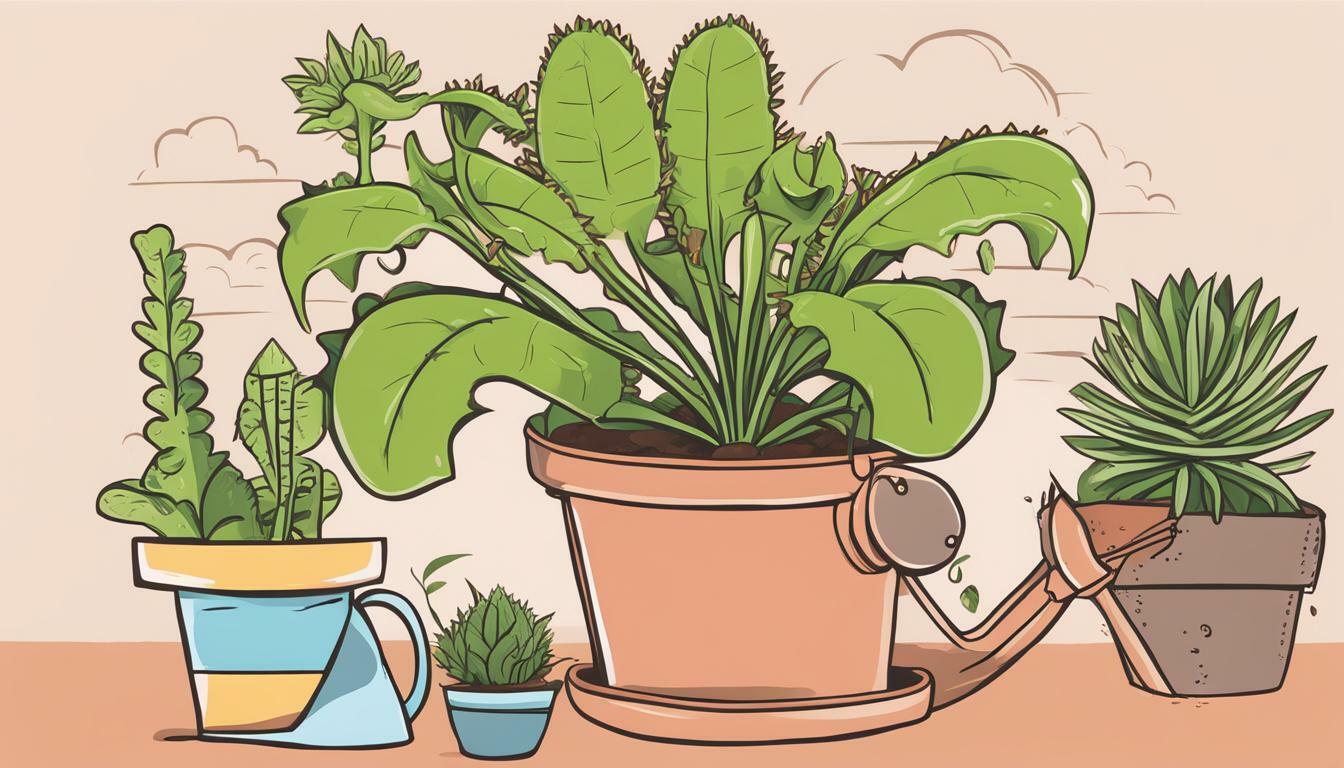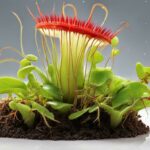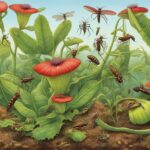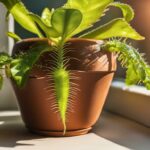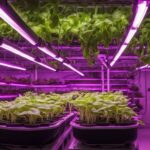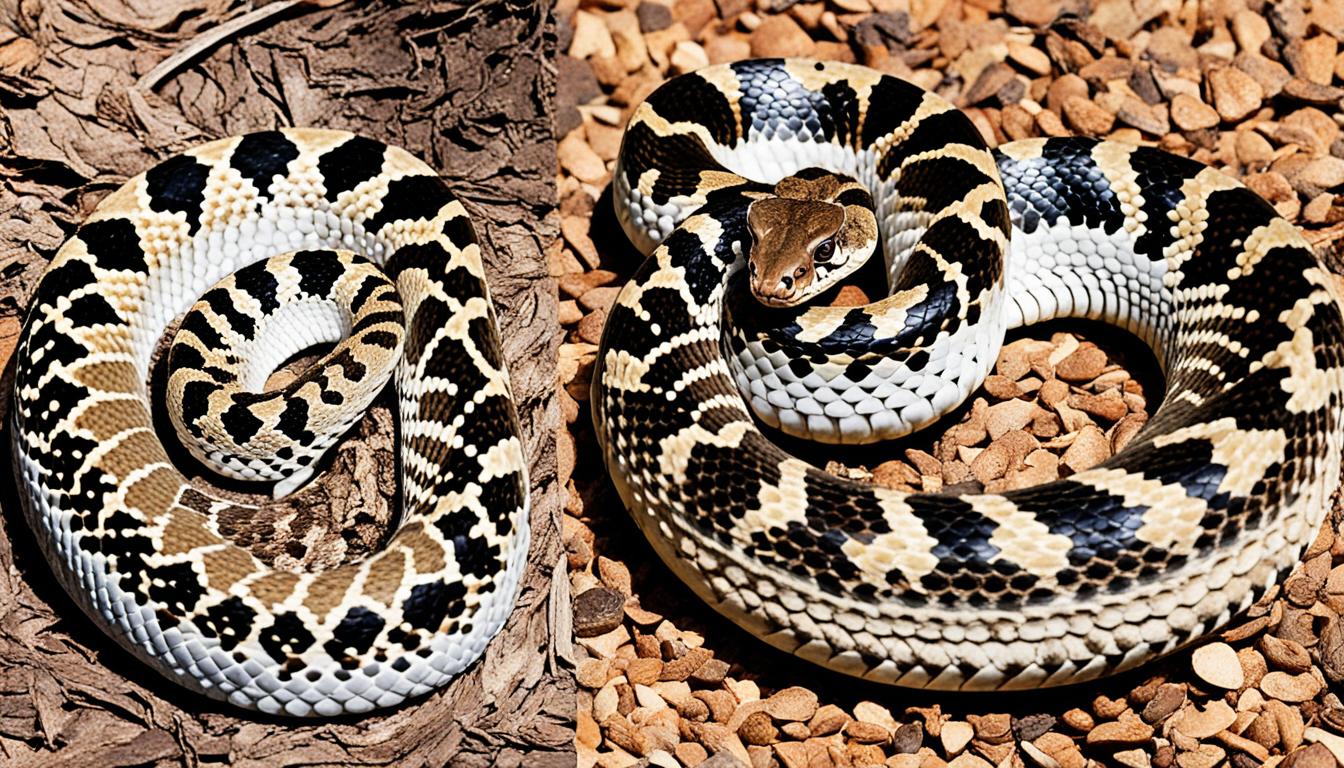If you’re considering adding a Venus Flytrap to your plant collection, you may be wondering if they require any special care. The answer is yes! Venus Flytraps are unique plants that require specific environmental conditions and care to thrive.
In this comprehensive guide, we’ll walk you through everything you need to know about caring for Venus Flytraps, including their care requirements, feeding habits, and common issues they may face. By following these guidelines, you can ensure your Venus Flytrap stays healthy and happy for years to come.
Key Takeaways:
- Venus Flytraps require specific care to thrive.
- Proper watering techniques, soil conditions, and feeding habits are essential for Venus Flytrap health.
- Creating a humid environment is important for Venus Flytraps.
Understanding Venus Flytrap Care Requirements
If you want to keep your Venus Flytrap happy and healthy, it’s important to understand its specific care requirements. These unique plants require special attention to thrive, so take note of the following Venus Flytrap care guide:
Natural Habitat
Venus Flytraps are native to the wetlands of the southeastern United States. They grow in acidic soils with low nutrient content, which means they don’t need to be fertilized. Mimic their natural habitat by planting your Venus Flytrap in a container with a 50/50 mix of sphagnum peat moss and perlite or sand.
Sunlight Needs
Venus Flytraps need full sunlight to grow properly. Place your plant near a south or west-facing window where it can receive at least six hours of direct sunlight per day. If you’re growing your Venus Flytrap outdoors, choose a spot with full sun exposure.
Temperature Preferences
Venus Flytraps prefer to grow in warm temperatures between 70-85°F (21-29°C). Avoid exposing your plant to temperatures below 32°F (0°C), which can cause damage or even kill it.
Soil Conditions
In addition to the right soil mix, Venus Flytraps require consistently moist soil. Use only distilled water or rainwater to water your plant, as tap water contains minerals that can harm them. Keep the soil moist, but not waterlogged, by watering when the top layer of soil feels slightly dry to the touch.
By understanding and following these Venus Flytrap care requirements, you’ll be able to provide your plant with the conditions it needs to thrive.
Watering Venus Flytraps: The Dos and Don’ts
Proper watering is crucial for the health and growth of your Venus Flytrap. Here are some essential care tips you need to know:
Distilled Water is Key
Venus Flytraps are sensitive to minerals and chemicals found in tap water, which can harm their growth. Use only distilled water or rainwater to ensure your plant gets the right nutrients.
Avoid Overwatering
It’s important not to overwater your Venus Flytrap. Only water the soil when it’s dry to the touch, and don’t let it sit in water for too long. Overwatering can cause root rot and damage the plant.
Create a Humid Environment
Venus Flytraps need a humid environment to thrive. You can achieve this by placing a tray of water near the plant or using a humidifier. Mist the leaves occasionally to keep them hydrated.
Use a Well-Draining Soil Mix
Venus Flytraps need well-draining soil to prevent water from stagnating in the roots. Use a mix of peat moss, perlite, and sand for the best results.
Final Thoughts
By following these watering guidelines, you can ensure your Venus Flytrap remains healthy and vibrant. Remember to provide distilled water, avoid overwatering, create a humid environment, and use well-draining soil for optimal growth. With these care tips, your Venus Flytrap will thrive for years to come.
Feeding Your Venus Flytrap: What You Need to Know
Venus Flytraps have unique feeding habits that require specific attention to ensure their health. Here are some essential tips to follow when feeding your Venus Flytrap:
Choose the Right Prey
Venus Flytraps are carnivorous plants that rely on insects for their nutrition. They can consume a variety of small insects, including flies, mosquitoes, and spiders. However, it is essential to avoid feeding them large insects, as the plant’s digestive system may not be able to handle them.
Feed Them Sparingly
While it may be tempting to feed your Venus Flytrap frequently, it is crucial to only feed them once every two weeks. Overfeeding can lead to digestive issues and may harm the plant in the long run.
Place the Prey Correctly
When placing the prey on the Venus Flytrap’s trap, ensure it is in the center and make sure the trap is open and ready to receive the insect. Press down gently but firmly on the trap to ensure the trigger hairs are activated, and the trap closes correctly.
Be Patient
Venus Flytraps can take several days to digest their prey fully. It is essential to leave the trap closed until the plant has finished digesting the insect entirely to avoid any damage to the trap.
By following these feeding guidelines, you can help promote the growth and health of your Venus Flytrap. Remember to keep a regular feeding schedule and avoid overfeeding to ensure your plant thrives for years to come.
Maintaining Venus Flytrap Health: Common Issues and Solutions
While Venus Flytraps are relatively low-maintenance plants, they can still experience a few issues that may affect their growth and overall health. By understanding these problems and taking the necessary steps to address them, you can help your Venus Flytrap thrive.
Pests
One of the most common issues that Venus Flytraps face is pests such as spider mites, aphids, and mealybugs. These insects can damage the leaves and weaken the plant. To prevent an infestation, regularly inspect your Venus Flytrap and immediately remove any insects you find.
If the infestation is severe, you can use an insecticidal soap or neem oil to eliminate the pests. Be sure to follow the instructions carefully and avoid spraying the solution directly on the leaves, as this can damage them.
Diseases
Venus Flytraps can also be susceptible to fungal diseases such as root rot and leaf spot. These can be caused by overwatering or poor ventilation. To prevent these diseases, make sure your Venus Flytrap is planted in a well-draining soil mix and avoid overwatering. If you notice signs of disease, such as yellowing leaves or black spots, remove the affected foliage immediately.
You can also treat your Venus Flytrap with a fungicide if the problem persists. Follow the instructions carefully and avoid spraying the solution directly on the leaves.
Leaf Damage
Another common issue with Venus Flytraps is damage to the leaves. This can be caused by rough handling, too much direct sunlight, or lack of humidity. To prevent leaf damage, make sure your Venus Flytrap is in a location with bright but indirect sunlight and maintain a humid environment around the plant.
If your Venus Flytrap’s leaves become damaged, remove the affected foliage immediately to prevent further damage and promote new growth.
By following these Venus Flytrap care requirements and tips, you can keep your plant healthy and thriving. Regularly inspect your plant for any issues, address them promptly, and enjoy watching your Venus Flytrap grow and catch its prey.
Conclusion
Now that you have a complete guide on caring for Venus Flytraps, you can ensure that your plant thrives in its new home. Remember to provide your plant with the specific care requirements it needs, including the right amount of sunlight, soil conditions, and water.
When it comes to feeding your Venus Flytrap, be sure to avoid overfeeding and only offer it the appropriate types of insects. And if you encounter any issues with pests, diseases, or leaf damage, take immediate action to address the problem.
Overall, following these care guidelines will help you maintain the health and longevity of your Venus Flytrap. With a little patience and attention, you can enjoy the unique beauty and fascinating feeding habits of this carnivorous plant.
Should I Prune Venus Flytraps for Proper Care?
Pruning Venus Flytraps is crucial for their proper care. The venus flytrap pruning essentials include removing dead leaves, cutting brown or black traps, and maintaining a compact shape. By pruning regularly, you ensure healthy growth and prevent the plant from wasting energy on non-functional traps.
FAQ
Q: Do Venus Flytraps require any special care?
A: Yes, Venus Flytraps do require special care to thrive. Proper care is crucial for their growth and health.
Q: What are the care requirements for Venus Flytraps?
A: Venus Flytraps require specific conditions for optimal growth. These include their natural habitat, sunlight needs, temperature preferences, and soil conditions.
Q: How should I water Venus Flytraps?
A: When watering Venus Flytraps, it is important to use distilled water, avoid overwatering, and create a humid environment.
Q: How should I feed my Venus Flytrap?
A: Venus Flytraps have unique feeding habits. They consume certain types of insects, require a specific feeding frequency, and should not be overfed.
Q: What are common issues faced by Venus Flytraps and how can I address them?
A: Venus Flytraps may face problems such as pests, diseases, and leaf damage. It is important to be aware of these issues and take appropriate measures to maintain the plant’s health.

